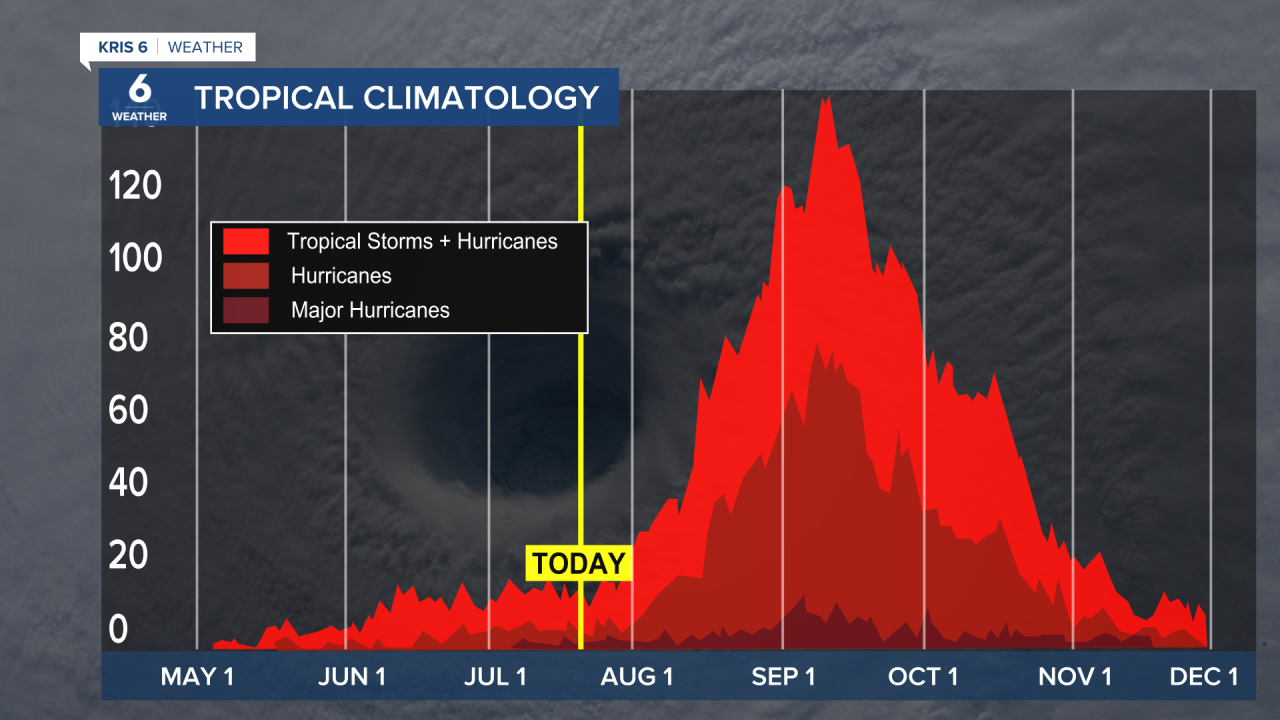CORPUS CHRISTI, Texas — The Tropics are looking pretty quiet — for now. While Invest 93L never fully developed into a tropical storm, that was largely due to an upper-level high pressure system that kept most of its associated storm just over the northern Gulf Coast. High pressure steered the majority of storms bubbling up within Invest 93L over land. It was this constant interaction with land that significantly disrupted any chance for a closed tropical low pressure to form. Aside from a new area of interest way out across the Atlantic, the National Hurricane Center has an easy weekend ahead. But history shows that may not be the case for much longer.
Looking back, we can see similarities to historical storms, such as the Category 1 Unknown hurricane of July 1934. Now referred to as "Three", that storm made landfall just north of Port Aransas and moved over Copano Bay. Like Invest 93L, its path began from the waters off the east coast of Florida, across the Florida peninsula, and then across the Gulf, and finally right to the Coastal Bend. In fact, South Texas has a history of tropical impacts during this time of year, with eight storms affecting the region between July 18th and July 31st.

As we head into August, the focus of tropical development tends to shift eastward, farther into the Atlantic. Activity usually picks up over the final weeks of July and this transition is significant. Marked by the sharp uptick on this chart of tropical climatology, August is said to be the 'real' start of Hurricane Season.

About 85% of hurricane activity typically occurs after August 1, leading us towards the climatological peak of hurricane season around September 10. The Atlantic Basin becomes a free-for-all at this point, with tropical development possible across a large area of the basin.

August is also known to be a month in which long-track storms become more common. Though Hurricane Beryl (2024) was a July storm and the earliest (Category 5 storm on record), it's usually the kind of storm one would expect to see in August. Other notable August storms are Hurricane Andrew (1992) and Hurricane Celia (1970). Being the 'A' storm, it was the first storm of the 1992 Hurricane Season— and it devastated South Florida, making landfall as a Category 5 monster. Neighbors here in the Coastal Bend still remember the third storm of 1970. On August 3, Celia made landfall as a catastrophic Category 4 hurricane. It's estimated that 85% of all structures in Corpus Christi were damaged.
This is a good reminder: don't be complacent! Review your hurricane plan with your loved one and stay ready this Hurricane Season. You can find helpful information in the KRIS 6 Hurricane Center.



